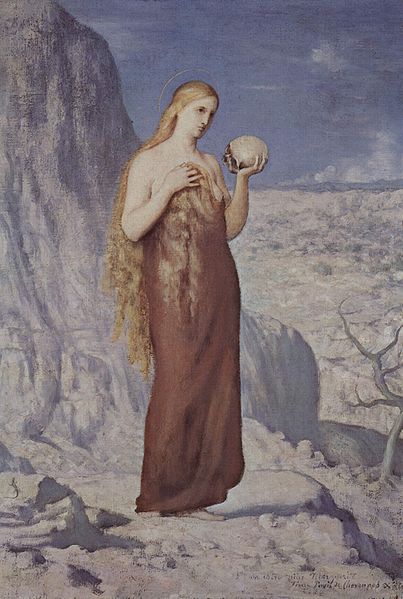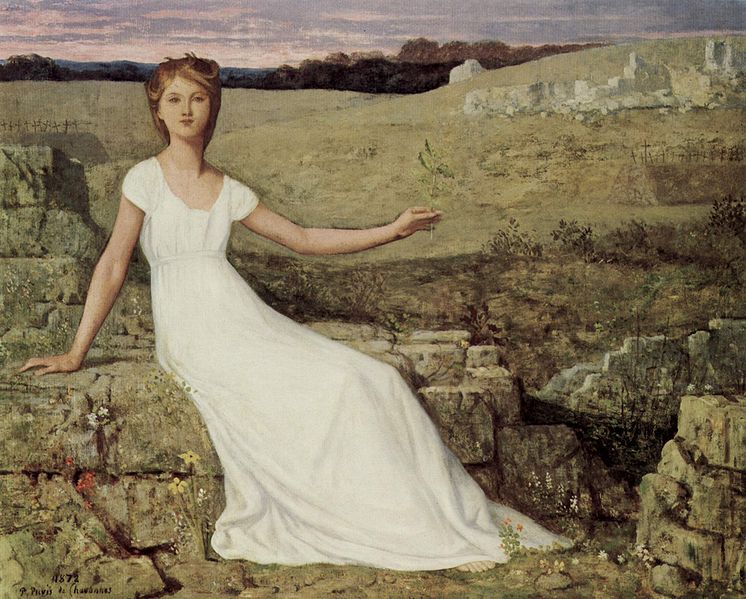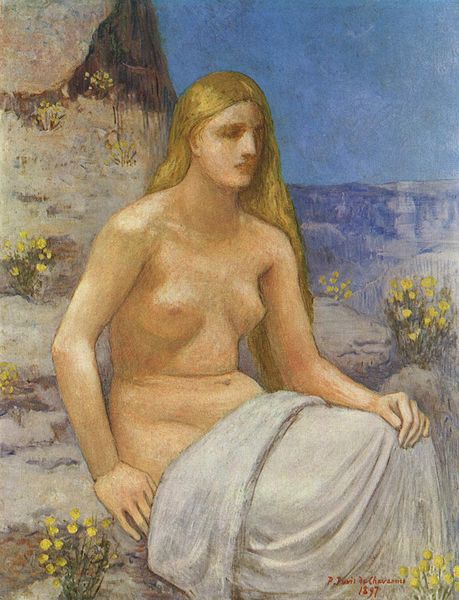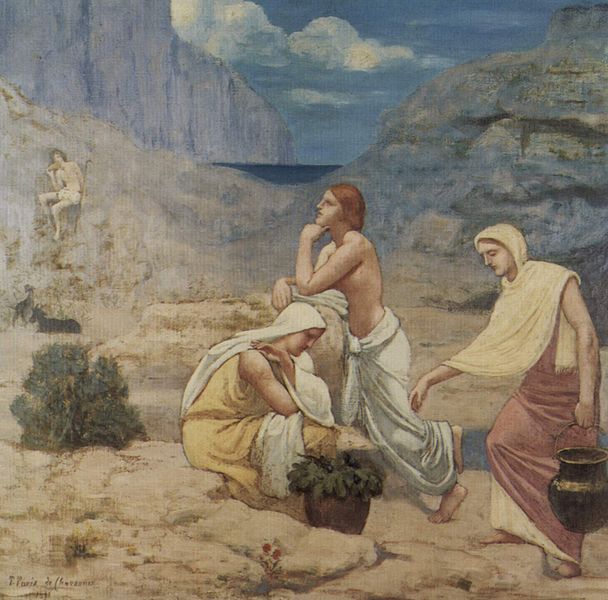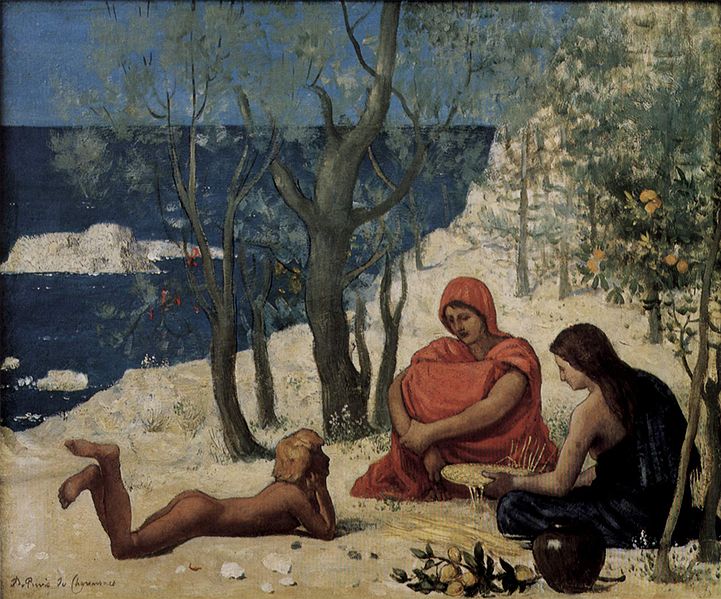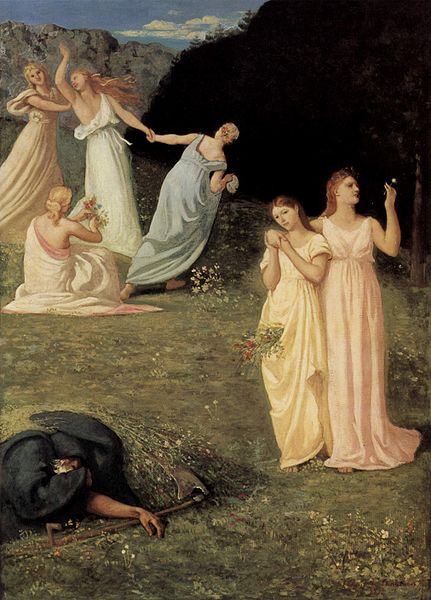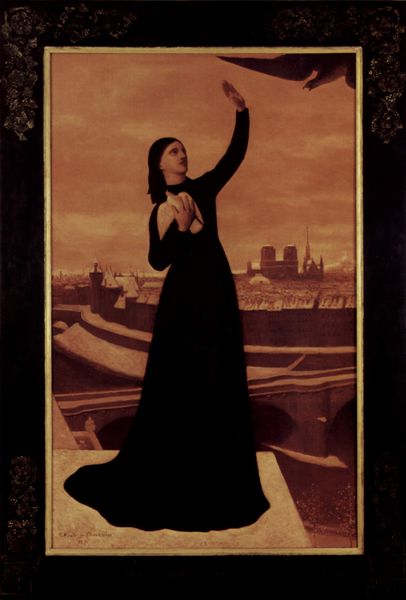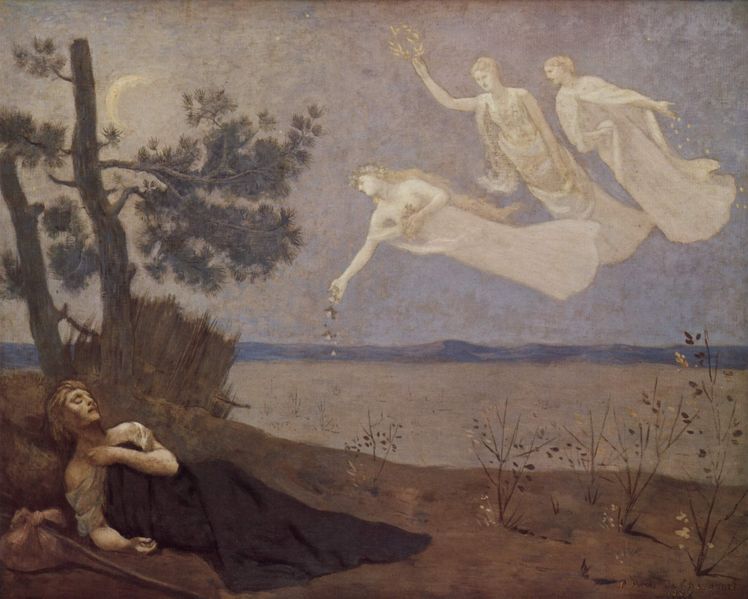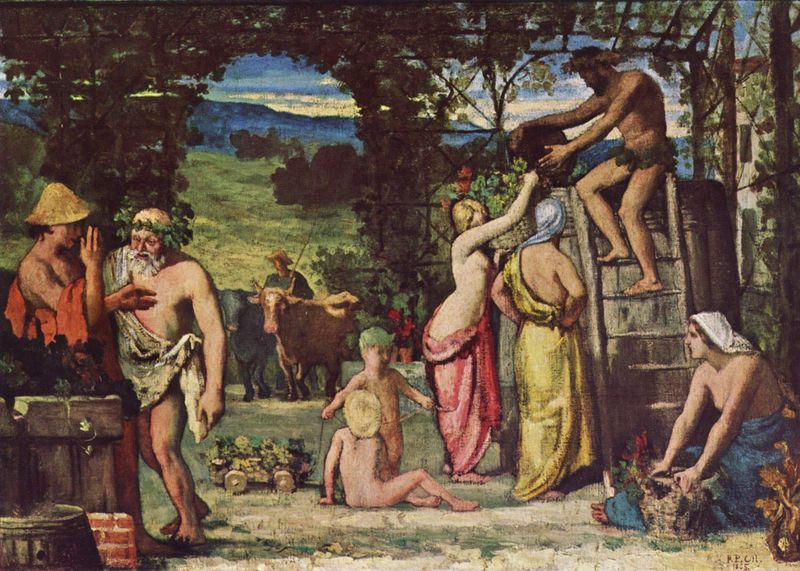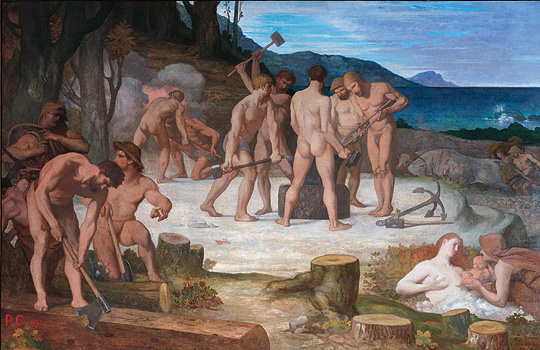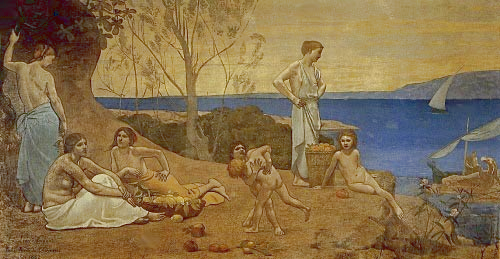<Back to Index>
- Apothecary Michel de Nostredame (Nostradamus), 1503
- Painter Pierre Puvis de Chavannes, 1824
- Minister of Foreign Affairs Karl Robert Nesselrode, 1780
PAGE SPONSOR
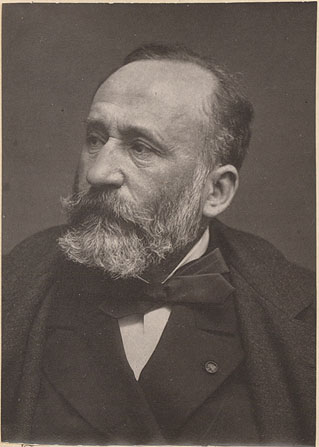
Pierre Puvis de Chavannes (14 December 1824 – 24 October 1898) was a French painter, who became the president and co-founder of the Société Nationale des Beaux-Arts and whose work influenced many other artists.
He was born Pierre-Cécile Puvis de Chavannes in Lyon, Rhône, France, the son of a mining engineer, descendant of an old noble family of Burgundy. Pierre Puvis was educated at the Lyons College and at the Lycée Henri IV in Paris, and was intended to follow his father's profession when a serious illness interrupted his studies. A journey to Italy opened his mind to fresh ideas, and on his return to Paris in 1844 he announced his intention of becoming a painter, and went to study first under Eugène Delacroix, Henri Scheffer, and then under Thomas Couture. It was not until a number of years later, when the government of France acquired one of his works, that he gained wide recognition.
In Montmartre, he had an affair with one of his models, Suzanne
Valadon, who would become one
of the leading artists of the day as well as the mother, teacher, and
mentor of Maurice
Utrillo. His
work is seen as symbolist in nature, even though he
studied with some of the romanticists,
and he is credited with influencing an entire generation of painters
and sculptors. One of his protégés was Georges de Feure. Puvis
de Chavannes is noted for painting murals,
several of which may be seen at the Hôtel
de Ville (City
Hall) in Paris, the Sorbonne,
and the Paris
Panthéon, and at Poitiers,
as well as at the Boston Public
Library in the
United States. Puvis
de Chavannes was president and co-founder in 1890 of the Société
Nationale des Beaux-Arts (National
Society of Fine Arts)
founded in Paris. It became the dominant salon of art at the time and
held exhibitions of contemporary art that was selected only by a jury
composed of the officers of the Société. Those
who translated best the spirit of the work of Pierre-Cécile
Puvis de Chavannes' in their own creations were, in Germany, the painter
Ludwig von Hofmann and in France, Auguste
Rodin. His easel
paintings also may be found in many American and European galleries. Beginning
in 1926, The Prix
Puvis de Chavannes (Puvis
de Chavannes prize) was
awarded by the National Society of Fine Arts (Société
Nationale des Beaux-Arts). The Prix
Puvis de Chavannes is
the
retrospective exhibition in Paris of the main works of the artist
awarded the prize that year. During the twentieth century, this
exhibition was located at the Grand Palais or the Musée d'Art
Moderne. The
most famous painters who have been awarded the prize are, 1941: Wilhem Van
Hasselt, 1944: Jean
Gabriel Domergue, 1952: Tristan Klingsor,
1955: Georges
Delplanque, 1957: Albert Decaris,
1958: Jean Picard Le
Doux, 1963: Maurice Boitel, 1966: Pierre
Gaillardot, 1968: Pierre-Henry,
1969: Louis Vuillermoz,
1970: Daniel du
Janerand, 1971: Jean-Pierre
Alaux; 1975: Jean
Monneret, and for 1987: André
Hambourg.
